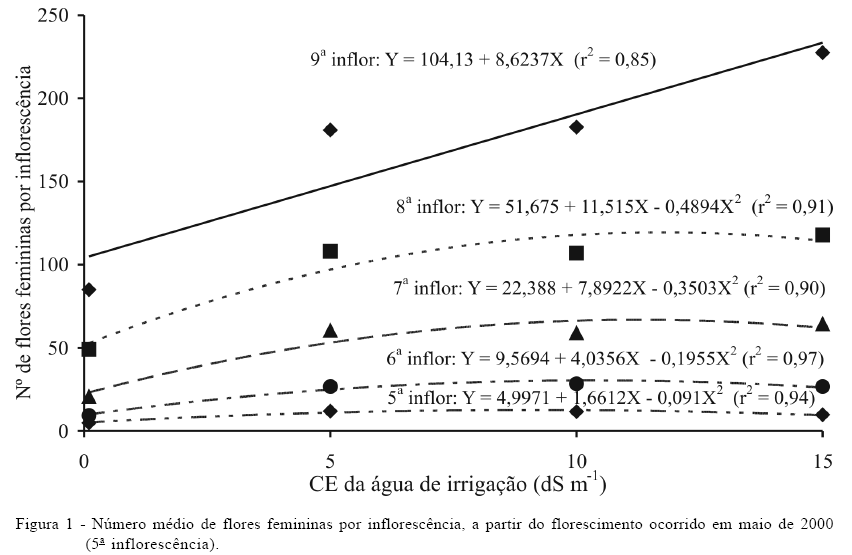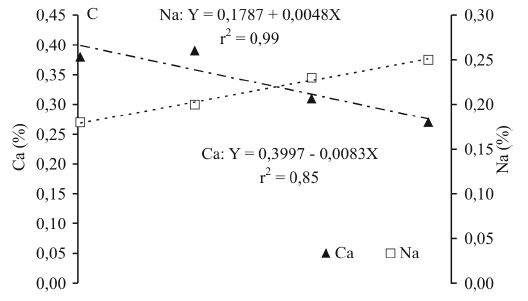The necessity to use saline waters in agriculture has increased due to pressure on good quality water, principally, for human consumption. With this objective, the effects of four levels of electrical conductivity (0.1, 5.0, 10.0 and 15.0dS m-1) of irrigation water obtained by addition of NaCl were studied on the development of 3.5 years old coconut (Cocos nucifera L.) cv. 'Anão Verde'. The experiment was conducted in a sandy soil adopting a completely randomized block design and micro sprinkler irrigation system in the municipality of Parnamirim - RN, Brazil, during the period of January, 2000 to March, 2001. The salinity of water increased the interval of leaf emission and inflorescences and the number of female flowers per inflorescence as well as the contents of Na and Cl in leaf 14, accompanied by antagonism between Na-Ca, Na-K and Cl-N, and synergism between Na-Mg but without any visual symptoms of toxic effects. The optimum levels of Na and Cl in 14th leaf were found to be 0.207 and 0.580%.
Cocos nucifera L.; nutrition; electrical conductivity

 Leaf emission, ionic relations and production of coconut irrigated with saline water
Leaf emission, ionic relations and production of coconut irrigated with saline water




